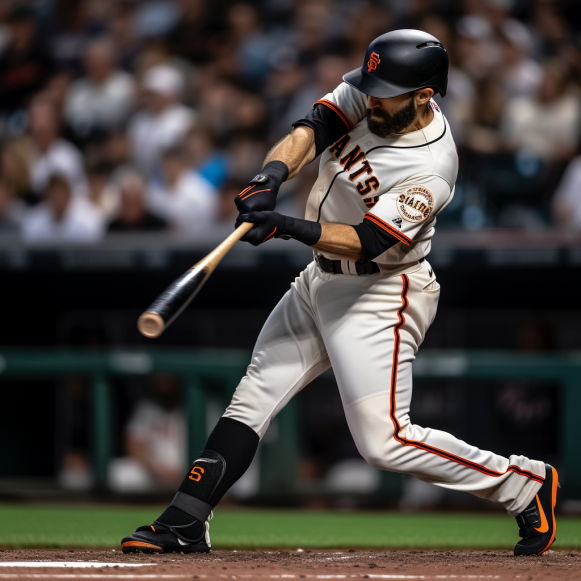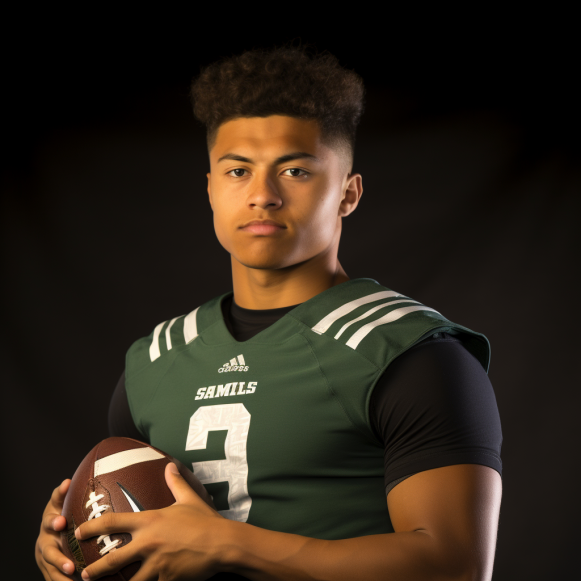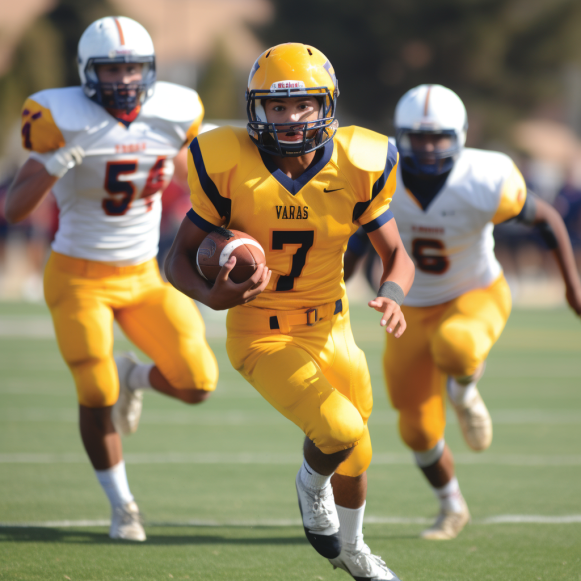The SF Giants don’t hit the ball hard. Does that matter?

The Giants have hit fewer balls at 110+ mph than all but one other team — and three players alone on the Atlanta Braves
ATLANTA (AP) — Look at the leaderboard to see how frequently all 30 MLB teams record balls in play at 110 mph or higher. Now scroll, scroll, and scroll some more. Before the Mets, Padres, and Dodgers. Continue on past the Royals, Rockies, and A’s.
The San Francisco Giants are ranked 29th.
Heliot Ramos’ home run last Saturday was their 21st of the season, fewer than any other team except the Washington Nationals.
To put it simply, the Giants don’t hit the ball very hard.
It depends on who you ask how much this matters, and how it relates to MLB’s worst offense in over two months.
“Always,” said manager Gabe Kapler.
But, according to hitting coach Justin Viele, “we’re not chasing it.”
Six games against the Atlanta Braves in the next ten days will serve as a litmus test.
Eleven players in the league have hit more balls at 110 mph or faster than the Giants, and three of them — Ronald Acua Jr., Austin Riley, and Matt Olson — are in Atlanta’s lineup. Nobody hits the ball harder — or scores more runs — than the Braves, who have twice as many balls in play at 110 or hotter (166) than the next-closest team and eight times as many as the Giants.
Kapler’s response came in response to a question about the Giants’ dwindling batting average on balls in play and how their inability to punish the baseball has contributed. Since the beginning of July — a 40-game sample size — no team in the league has had a lower rate of success when making contact than the Giants’.260 rate.
“It’s almost never exclusively just, ‘Hey, we’ve had some bad luck,'” Kapler said. “If we hit the ball harder, we’ll have more luck on balls in play.”
“Faster balls in play will move through the infield faster and will be caught less.” If you hit a ball 100 mph in the gap and an outfielder tracks it down, he might not catch it if you hit it 107. As a result, the harder you strike the ball, the better. The higher the trajectory of hard-hit balls, the more likely you are to hit home runs and doubles. When you have low BABIP, it’s usually a combination of those two things.”
However, there is no getting around the point raised by Viele.
“A lot of good hitters don’t have top-end max exit velocities,” he explained.
Luis Arraez of the Marlins, who was flirting with.400 for a while, ranks in the bottom 10% of the league in max exit velocity. Buster Posey’s average exit velocity in his final season was in the 35th percentile.
Look no further than Wilmer Flores, who has been the Giants’ most productive hitter this season by a long shot. The hardest ball he hit this season was 108.7 mph, the lowest maximum exit velocity of any qualified Giants hitter, and on average, 94% of the league hits the ball harder.
“Great if you hit it hard. “How often you hit it hard is more important to me,” Flores said. “I’m comfortable hitting 95 on the sweet spot every time.” It’s how consistently you can hit the ball hard that matters to me. Not as difficult, but with better results on average. You’ll get good results if you can hit it hard and frequently. Similar to Acua.”
According to Statcast, the official definition of a hard-hit ball is one that leaves the bat at 95 mph or faster.
The Giants fare slightly better, with 39.7% of their balls in play occurring, but this still ranks 19th in the majors.
Many of their more favorable metrics include launch angle, which Viele believes is more teachable.
They are ranked 16th in terms of sweet spot rate, or the number of times they connect with a ball at a trajectory ranging from 8 to 32 degrees. They are also tied for 11th in terms of how frequently they “barrel” a pitch up, which means balls struck at least 98 mph with a launch angle between 0 and 50 degrees.
“Some guys hit 113 (mph), and everyone’s like, wow, 113! “However, it’s a one-hopper to shortstop or a one-hopper to third base,” Viele explained. “That accomplishes nothing.” That means your swing path is probably off, or you were off timing, or something. I’d rather have guys control their launch instead of chasing exit velos. Because, when it comes to exit velos, I believe that if I hit off the tee right now and we had a radar gun, my highest exit velos would be ground balls to third.”
When it comes to top-end exit velocity, according to Viele, some guys have it and some don’t.
That would explain why two players — Ramos (three) and Joc Pederson (eight) — account for the majority of the Giants’ 110-plus mph balls this season, while the aforementioned group of 11 mashers accounts for nearly a quarter of the league’s ultra-hard-hit balls.
“I think there’s guys who hit it hard and guys who don’t hit it as hard, and you just try to take good swings because when you’re on time and take a good swing out in front of the plate, generally you’re going to hit the ball hard,” he explained. “You’re aware that Joc and Ramos hit the ball hard. They have big engines and enough speed in their swing that when they hit the ball, it won’t be 105, but 110-115. Then there are some guys who just have an end range based on who they are. A lot of it is also based on bat speed. If you have a lot of bat speed, you’ll hit the ball hard when you connect.”



